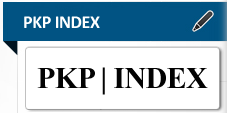Earthquake Date Prediction Based on The Fluctuation of Radon Gas Concentration Near Grundulu Fault
Abstract
There were 5 to 26 destructive earthquakes from 2020 to 2022 in Indonesia. Earthquake prediction is unsuccessful and has not provided a reliable forecasting mechanism. At the same time, it is necessary to have an earthquake early warning system to reduce the risk of an accident. In Indonesia, radon gas has been studied to determine its relationship with earthquake events, but earthquake predictions have low sensitivity and accuracy values. In this study, the prediction of earthquake time was carried based on radon gas concentration fluctuations in the active Grundulu fault, which is located in Pacitan, East Java, Indonesia. The method is to collect radon gas concentration measurement data from telemonitoring stations near active faults. The data is then sent to the web server and processed based on the daily average. The daily average of radon gas concentrations and earthquake occurrences is tabulated by day. The daily average data for the concentration of radon gas that is processed is when an earthquake occurs between the Eurasian and Indo-Australian plates with a magnitude of more than M4.5. After that, the daily average radon gas concentrations were statistically processed to find the earthquake time prediction algorithm. The study's findings show that earthquakes above M4.5 that occur between the Eurasian and Indo-Australian plates can be predicted using statistical data processing from radon gas concentration measurements near the Grundulu fault, Pacitan, 1-4 days before the earthquake. The earthquake date prediction algorithm developed has a sensitivity and precision of 78.79% and 70.27 %. This achievement is better than previous research that predicts the time of earthquakes near the Opak Fault, Yogyakarta.
Kata kunci: Active Fault, Earthquake, Prediction, Radon, Telemonitoring
Keywords
Full Text:
PDFDOI: http://dx.doi.org/10.34126/jlbg.v14i2.478
Refbacks
- There are currently no refbacks.

This work is licensed under a Creative Commons Attribution-NonCommercial 4.0 International License.









